Abstract
Biological and practical constraints on the use of clinical hyperthermia for the management of cancer are discussed. Commonly used electromagnetic techniques for producing clinical hyperthermia are reviewed and compared. Innovative engineering designs leading to the realization of an integrated, safe and reliable clinical hyperthermia system are also presented.
Full text
PDF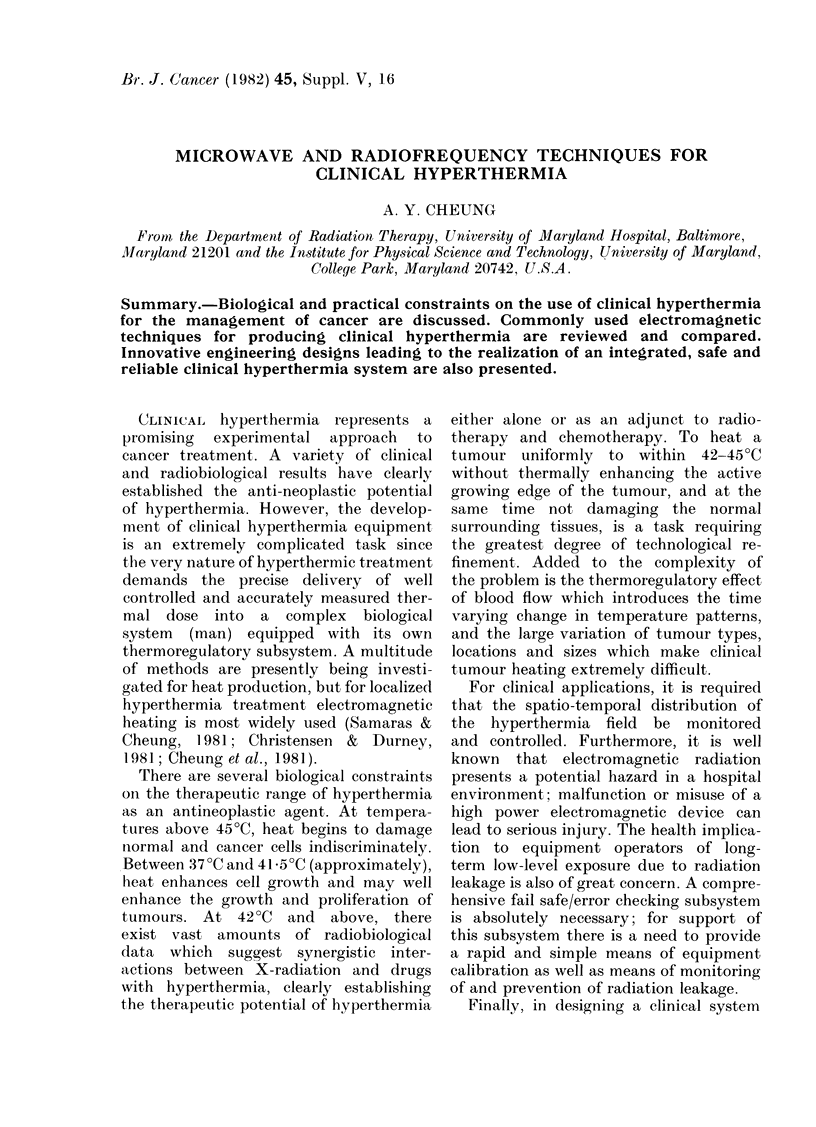
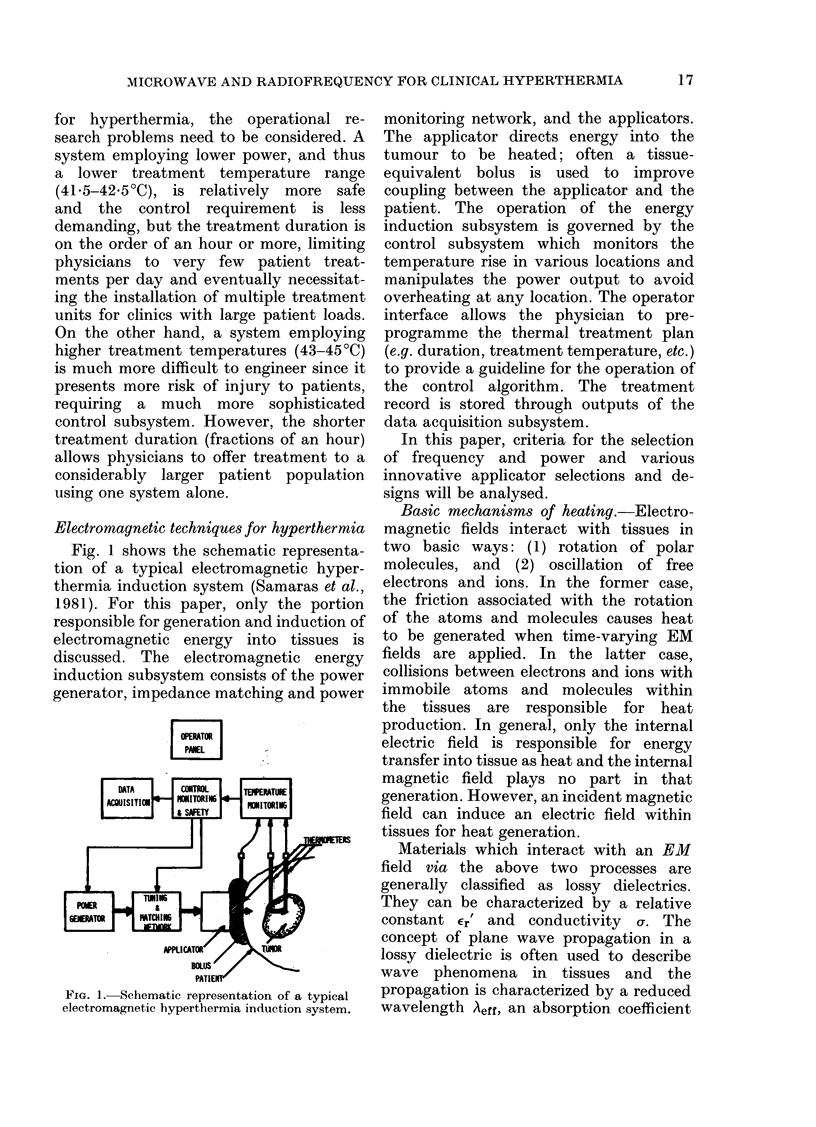
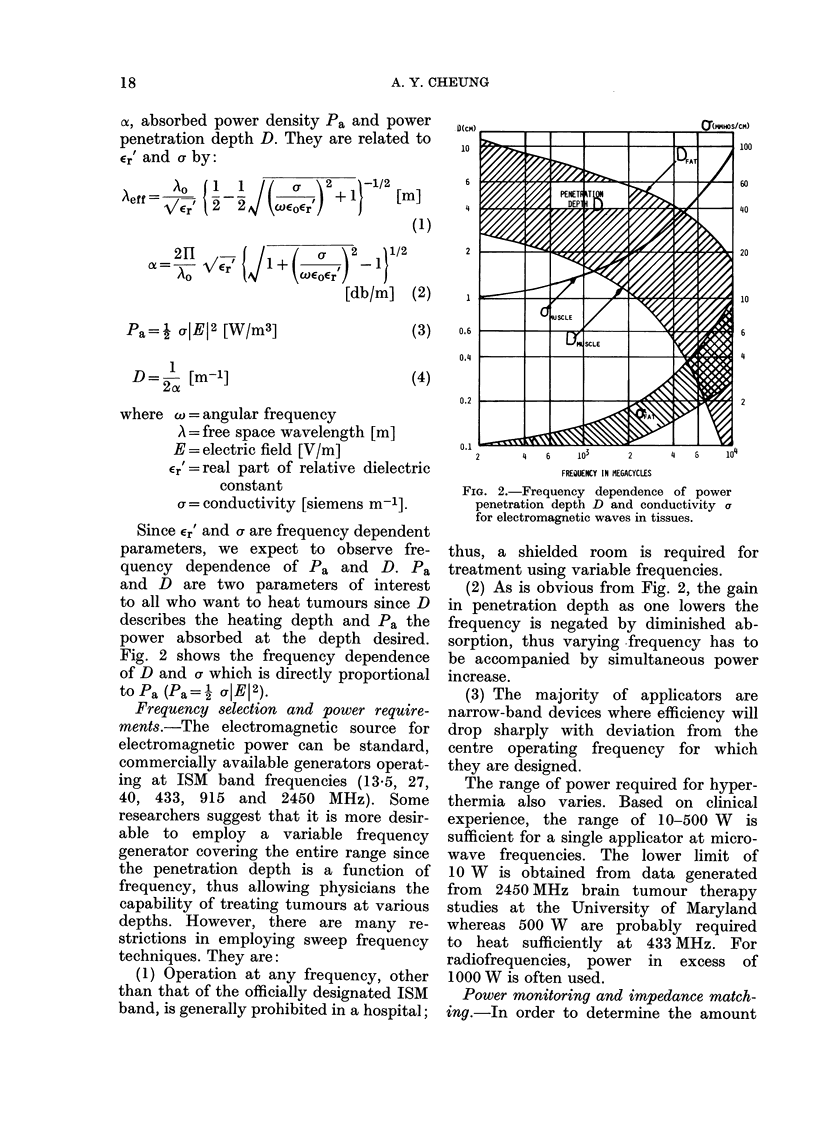
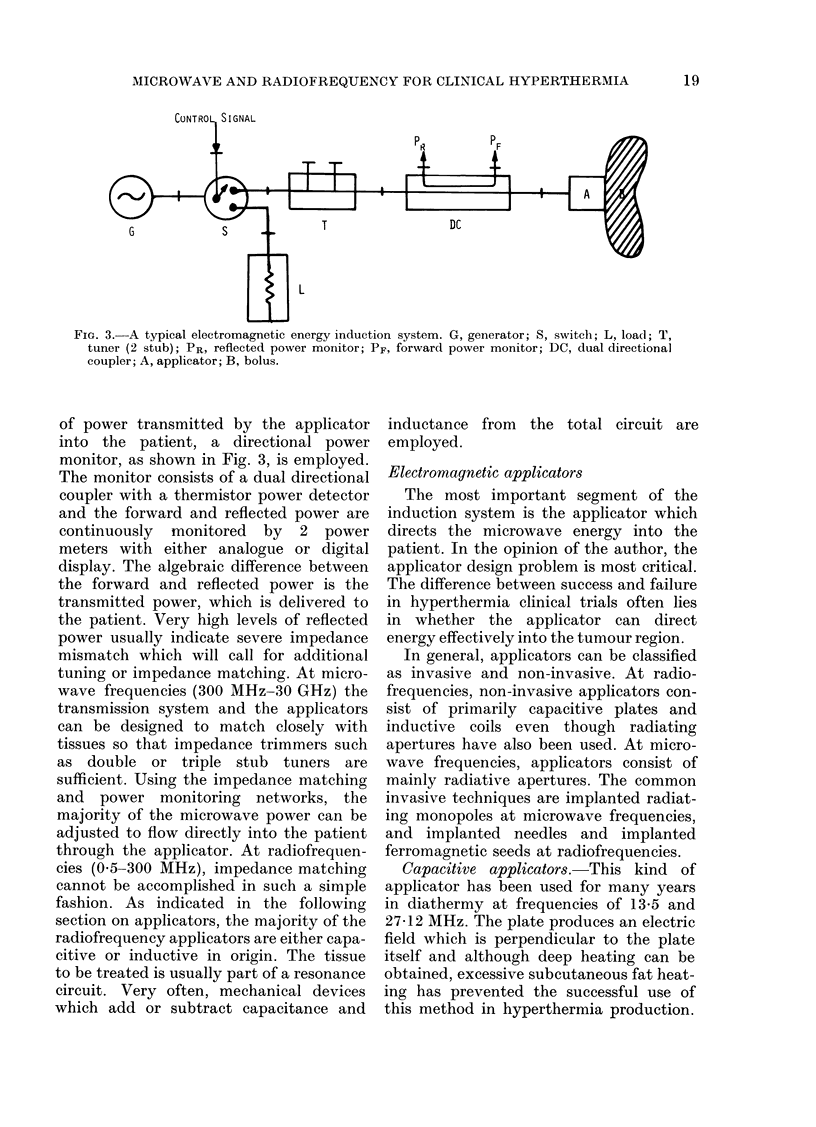
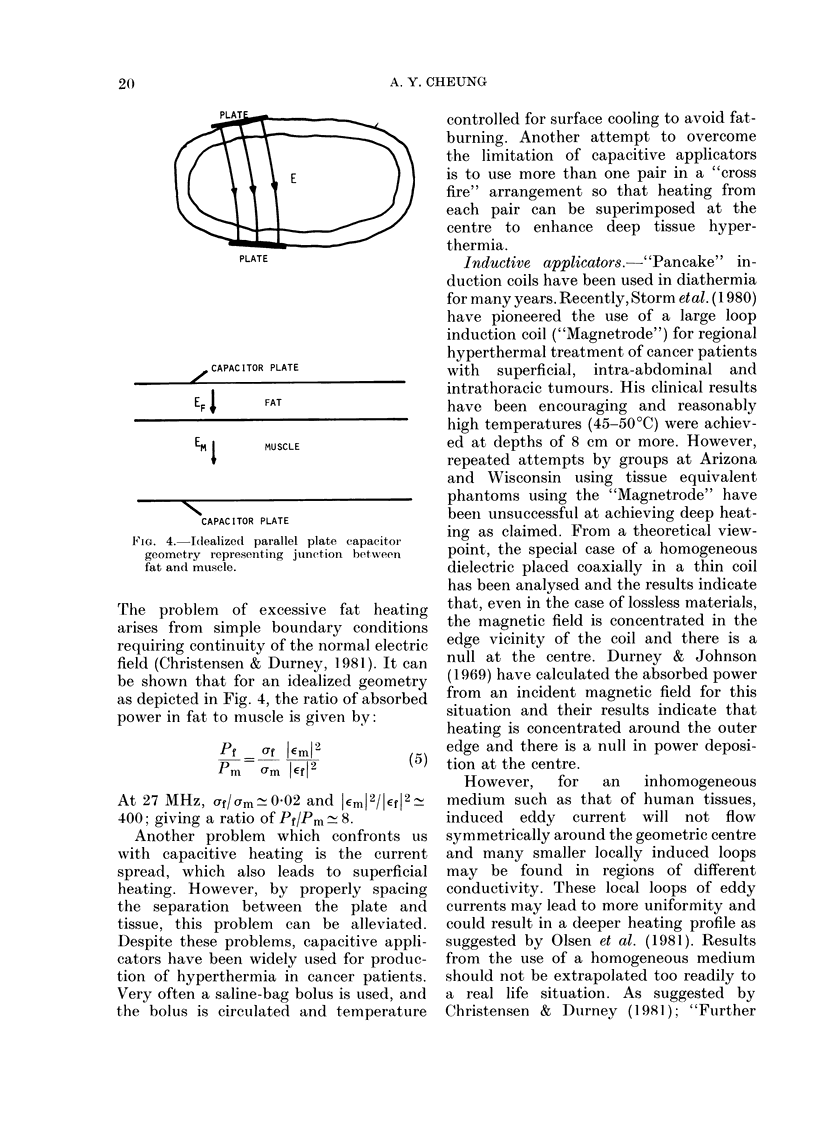

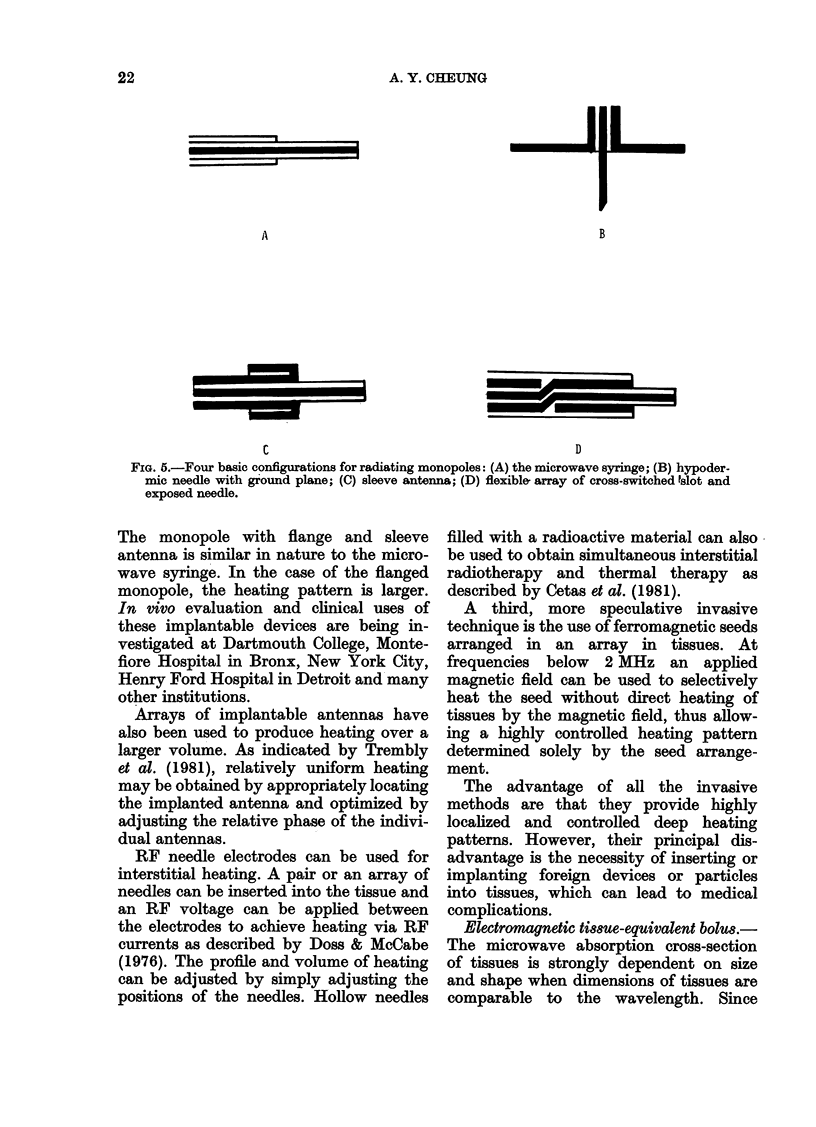

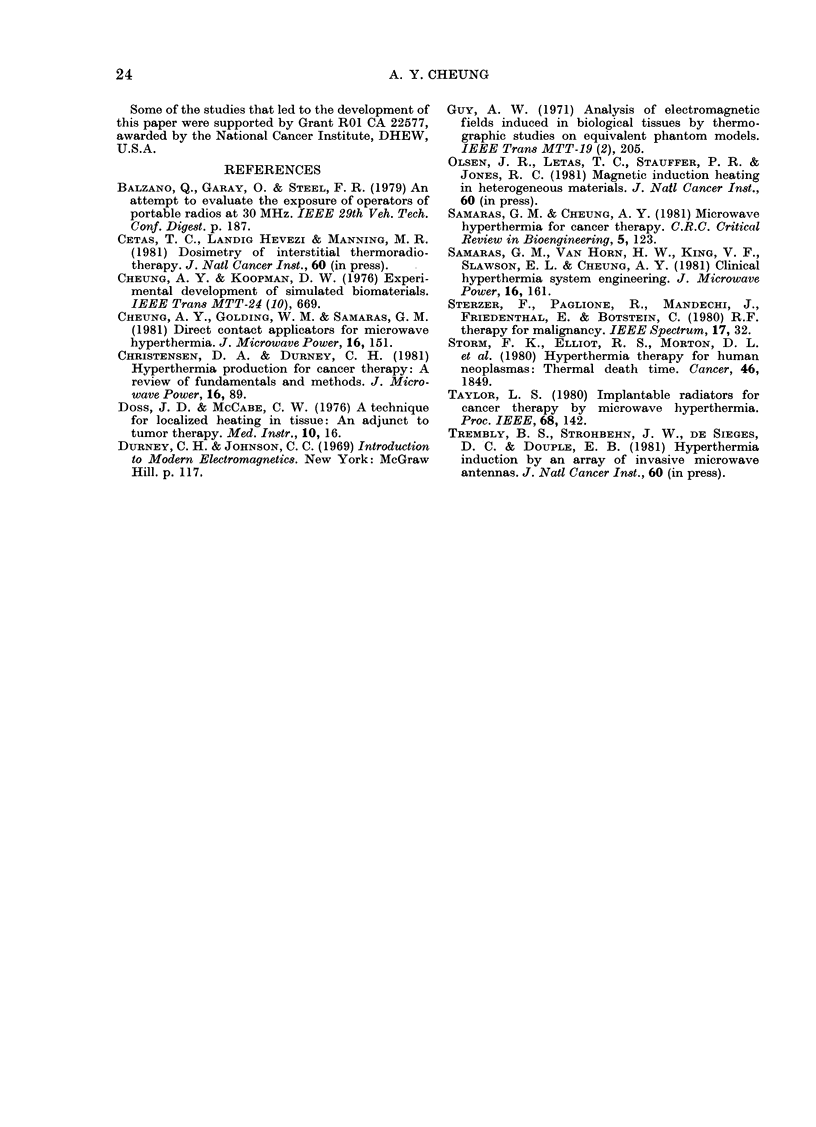
Selected References
These references are in PubMed. This may not be the complete list of references from this article.
- Cheung A. Y., Golding W. M., Samaras G. M. Direct contact applicators for microwave hyperthermia. J Microw Power. 1981 Jun;16(2):151–159. doi: 10.1080/16070658.1981.11689233. [DOI] [PubMed] [Google Scholar]
- Christensen D. A., Durney C. H. Hyperthermia production for cancer therapy: a review of fundamentals and methods. J Microw Power. 1981 Jun;16(2):89–105. doi: 10.1080/16070658.1981.11689229. [DOI] [PubMed] [Google Scholar]
- Doss J. D., McCabe C. W. A technique for localized heating in tissue: an adjunct to tumor therapy. Med Instrum. 1976 Jan-Feb;10(1):16–21. [PubMed] [Google Scholar]
- Samaras G. M., Cheung A. Y. Microwave hyperthermia for cancer therapy. Crit Rev Bioeng. 1981;5(2):123–184. [PubMed] [Google Scholar]
- Samaras G. M., vanHorn H. W., King V. F., Slawson E. L., Cheung A. Y. Clinical hyperthermia systems engineering. J Microw Power. 1981 Jun;16(2):161–169. doi: 10.1080/16070658.1981.11689234. [DOI] [PubMed] [Google Scholar]
- Storm F. K., Harrison W. H., Elliott R. S., Morton D. L. Hyperthermic therapy for human neoplasms: thermal death time. Cancer. 1980 Oct 15;46(8):1849–1854. doi: 10.1002/1097-0142(19801015)46:8<1849::aid-cncr2820460824>3.0.co;2-s. [DOI] [PubMed] [Google Scholar]


